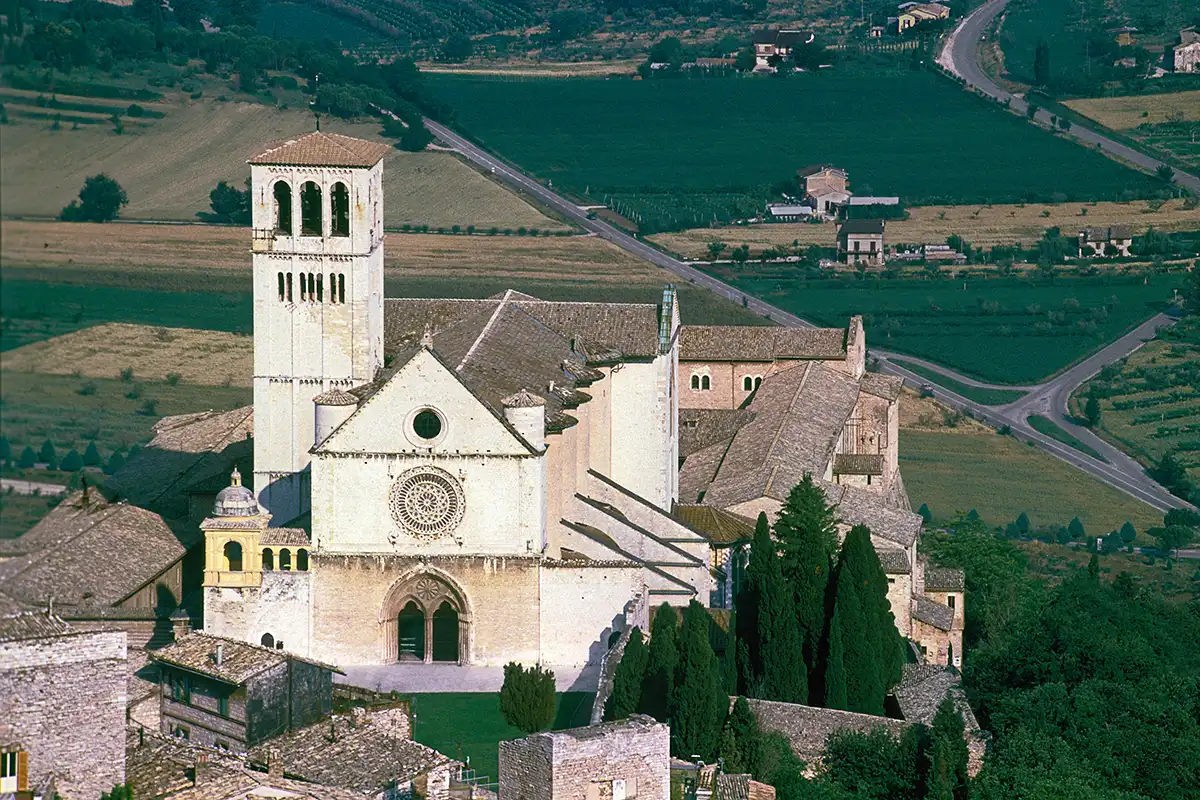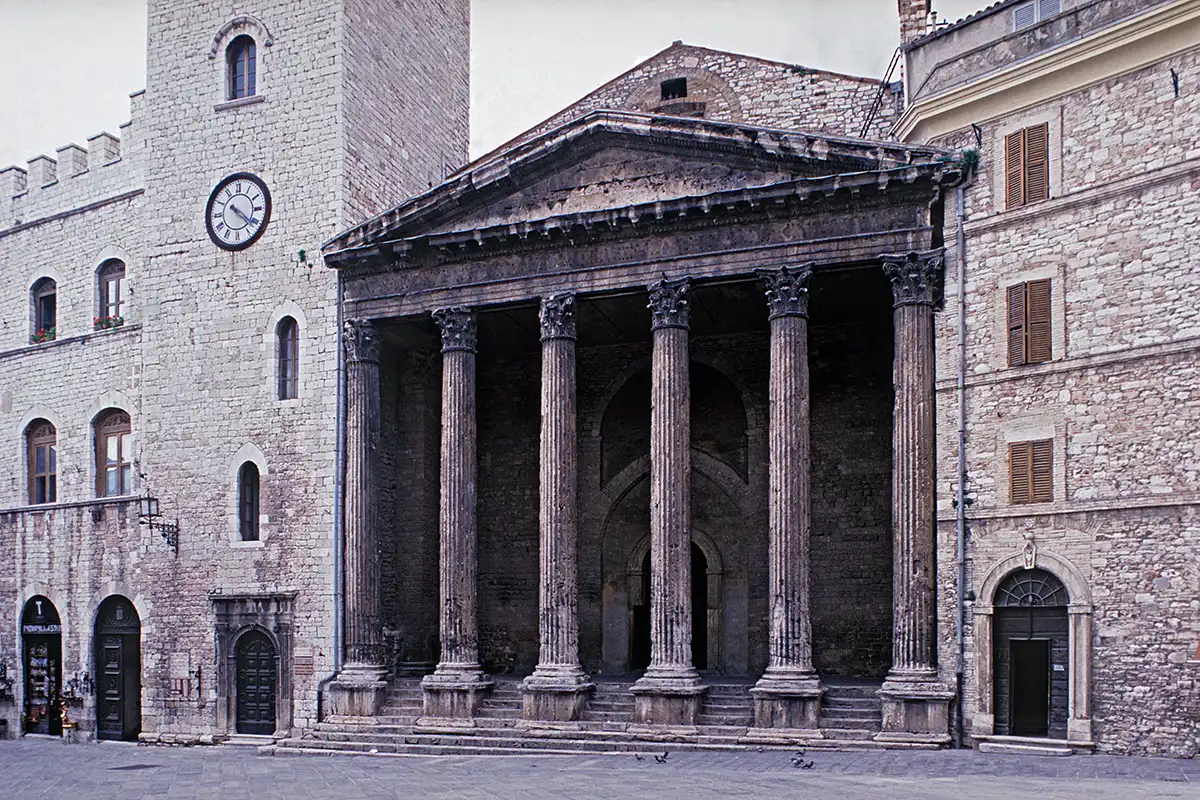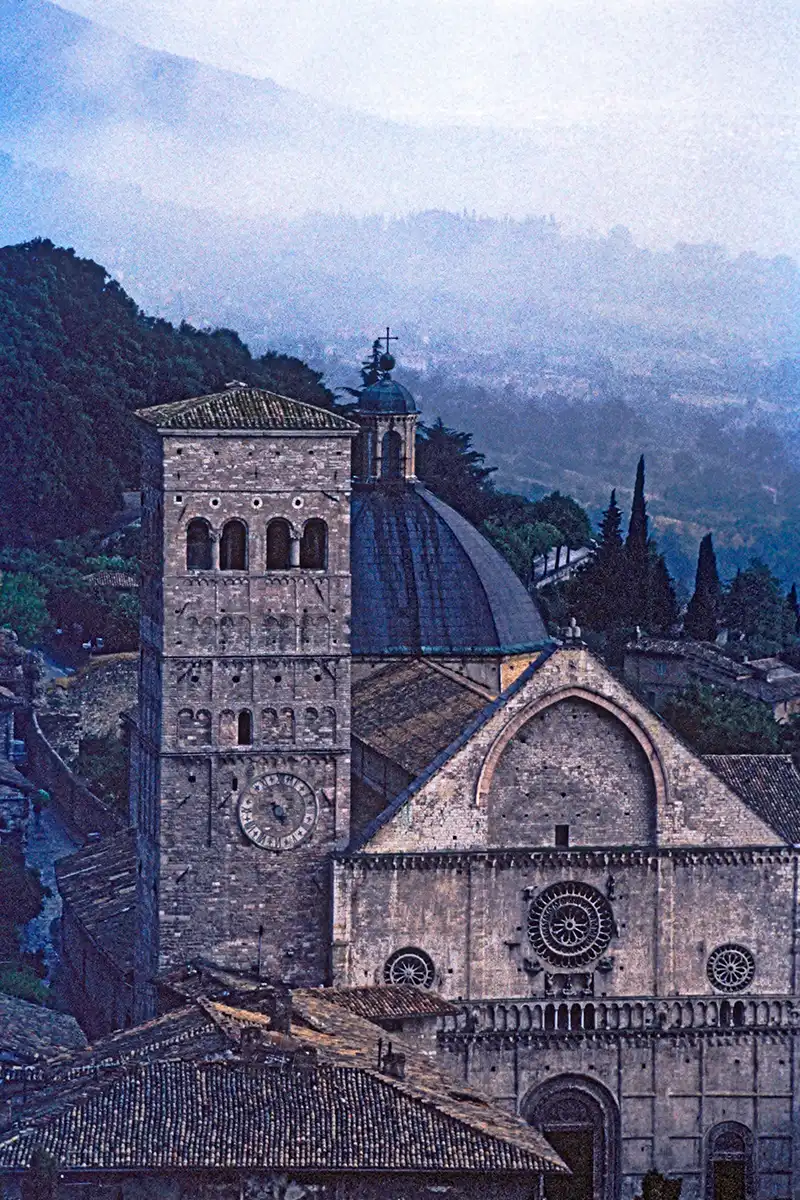Assisi & St. Francis, Italy
Approximately 90 miles north of Rome, in the rolling hills of Umbria, stands the exceptionally well-preserved medieval town of Assisi. Known primarily as the birthplace of St. Francis (1182-1226 AD), the town has been sacred since long before the Franciscan era. Little is known regarding its original founding. One legend tells that the ancient town, called Assisium, came into existence around a holy spring later venerated by the Etruscans (9th - 5th centuries BC) and, following them, by the Romans. Another legend tells that the town was begun by Dardanus 865 years before the founding of Rome (April 21, 753 BC).
Sometime in the 1st century BC, a temple of Minerva, the Roman goddess of art, handicrafts, and the professions, was constructed at the sacred spring. During the early Christian era, the sanctuary of Minerva was destroyed, a series of churches were erected at the site, and the holy spring stopped flowing. Subject to the dukes of Spoleto in the early Middle Ages, Assisi became an independent commune in the 12th century and was involved in disputes and battles with nearby Perugia before passing to the Papal states. It became part of the Italian kingdom in 1860.
St. Francis was born in Assisi in 1182 (some sources say 1181), the son of a well-to-do cloth merchant. A lively, even riotous youth who dreamed of achieving military glory, Francis abandoned his worldly ambitions at 19 while a prisoner of war in Perugia. After that, he became a mystic who experienced visions of Christ and Mary, composed the first poems in the Italian language about the beauties of nature, and, in 1210, founded the famous order of mendicant friars known as the Franciscans. His repudiation of the worldliness and hypocrisy of the church, his love of nature, and his humble, unassuming character earned him an enormous following throughout Europe, posing an unprecedented challenge to the decadent Papacy.
Francis was the first known Christian to receive the stigmata, the spontaneously appearing wounds on the hands, feet, and side of the body corresponding to the torments of Christ on the cross. These injuries caused Francis great pain and suffering. Still, he bore them with his characteristic serenity, keeping the matter secret for many years to not draw attention to himself and away from god.
The Basilica of San Francesco (pictured above), one of Italy's foremost monuments, was built between 1228 and 1253 AD. The short period of its construction, rare for a church of this size, is often explained as a measure of the great love that the people of the time had for St. Francis. By the mid-1400s, pilgrims from all parts of Europe were flocking to Assisi, and today, the walled medieval town and its grand basilica are among the most visited Christian shrines.
The author, during his extensive travels to the world's sacred sites, has frequently perceived that certain places have a distinct feeling, presence, or energy of peace. Assisi is one of these places. The entire town, particularly the Basilica, has a definite atmosphere of peacefulness that awakens and stimulates that same characteristic in the human heart. In this regard, it is perhaps more fitting to call such sacred sites empowerment places rather than power places.

Martin Gray is a cultural anthropologist, writer and photographer specializing in the study of pilgrimage traditions and sacred sites around the world. During a 40 year period he has visited more than 2000 pilgrimage places in 160 countries. The World Pilgrimage Guide at sacredsites.com is the most comprehensive source of information on this subject.



